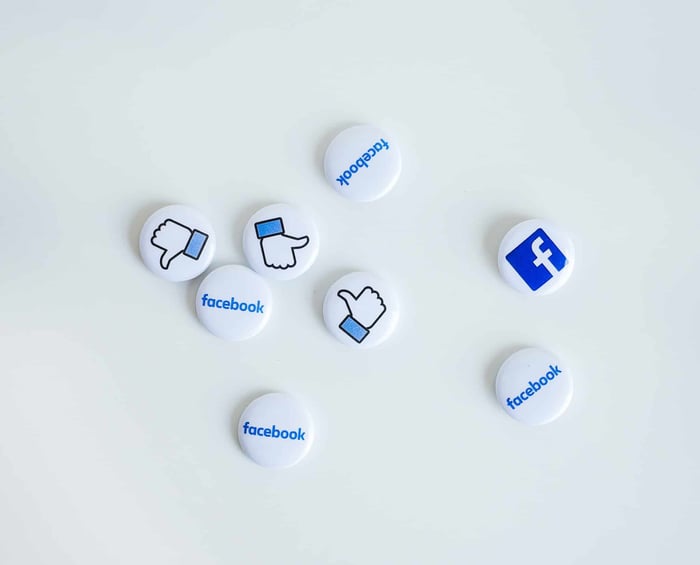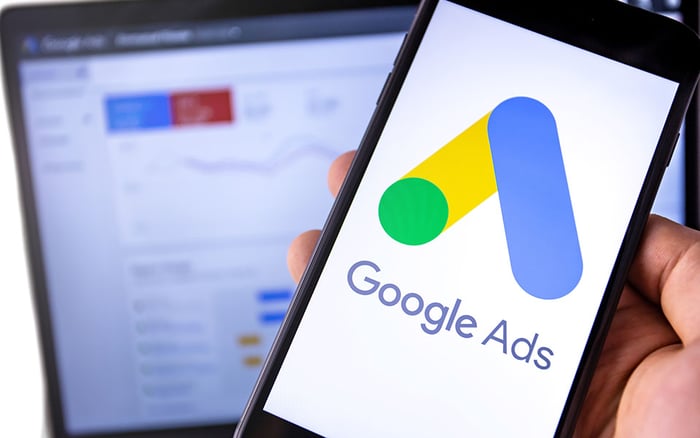Updated on November 18, 2022 | 4 minute read | Olivia MacCunn
Home > Resources > Are Facebook Ads better for advertising than Google Ads?
When planning your online advertising strategy, it’s important to research which platforms will facilitate achieving your marketing goals. Facebook Ads and Google Ads dominate the online ads industry, and both platforms boast a number of benefits.
In order to find the best platform for your online ads (or the best features to combine), let’s take a look at the key differences between Facebook Ads and Google Ads.
Related articles
Three key strategies to using Facebook Ads with Google Ads
Explore our ultimate guide to digital marketing
Making the most of high intent searches on Black Friday
Firstly, Facebook Ads is a type of paid social – this means using social media platforms to advertise to target audiences.
Many Facebook Ads appear in the news feed, integrated into the organic content the user sees. However, Facebook also offers display ads on desktop, ads on its mobile and tablet apps, on its sister app Instagram, video ads, and even on Facebook Messenger.
Furthermore, the extensive personal data collected from users allows Facebook to create vast numbers of niche target audiences. Facebook goes one step further to enable marketers to create “lookalike audiences”.
“Lookalike audiences” are created using information like age, gender, interests, and interaction with other ads. This wealth of data is what facilitates Facebook in matching users to your consumer data. In turn, this grants marketers the opportunity to amplify their potential advertising reach.

Image-based channel: The visual platform helps Facebook to integrate ads with organic images, videos and other visual content.
Audience: Recent figures show Facebook attracts more than 2.8 billion Monthly Active Users (MAUs): as a medium of paid social, the social media giant remains unrivaled for its immense number of users.
Audience Granularity: Given the ability to combine your existing customer data to Facebook’s vast audience data, retargeting previous customers at a more precise level – particularly when they’re not actively shopping – becomes much more straightforward.
Lower CPAs and CPCs than Google, though users on average are less likely to be purchase-ready.
Facebook Ads operates in a way that helps users find businesses depending on their unique interests and interactions online. If your goal is to boost brand awareness and a social following, Facebook can help you accomplish that.
Google Ads is so popular as a marketing tool, it’s become almost synonymous with the phrase “paid search”. The platform is split into its Search network and a Display network, the former comprising anything searched into Google. The latter refers to the display ads and banners featured across countless websites, in Youtube videos, and even within Gmail.
This expansive presence across the web enables retailers to increase brand awareness using images, similar to paid media.
Unlike Facebook, retailers cannot create “lookalike audiences”. Instead paid search involves targeting consumers using keywords or remarketing your existing and previous customers.
Moreover, rather than displaying ads in front of passive audiences, Google Ads provides a medium for retailers to target consumers actively shopping at all stages of the sales funnel.

Vast audience: With Google Ads, you can take advantage of the Google Display Network which spans 98% of the World Wide Web. Moreover, with 40,000 searchers per second, and 3.5 billion searches every day, Google equips merchants with an incomparably large audience – just make sure you’re targeting the right people.
Equal opportunity: Contrary to popular (mis-)belief, winning those top impressions on the Shopping carousel is not restricted to the enterprises with the biggest budgets. In actual fact, Google ranks Shopping results by the relevance and quality of your ad… as well as your CPC.
Are you overbidding for guaranteed clicks, wasting your ad spend? Discover how granular bidding saves your pennies.
Variety of ad formats: The accessibility of both PPC text and visual ads provides both the opportunity to considerably cultivate brand awareness as well as the option to target (and retarget) purchase-ready users, and boost sales.
If your goal is to boost conversions, you may find more success with Google Ads – it’s the prime choice for those seeking to drive traffic with a greater purchase intent and likelihood to convert.
The significant difference in the platforms is that while Google Ads helps you find new customers, Facebook Ads helps prospective customers find you. The two can be used in tandem to accomplish a variety of goals within your overall marketing strategy.
Why not read our guide to conversion rate optimization, and discover how advanced techniques successfully move customers through checkout.
Book a call today to speak to a Google Shopping specialist about optimizing your Shopping bid management.

